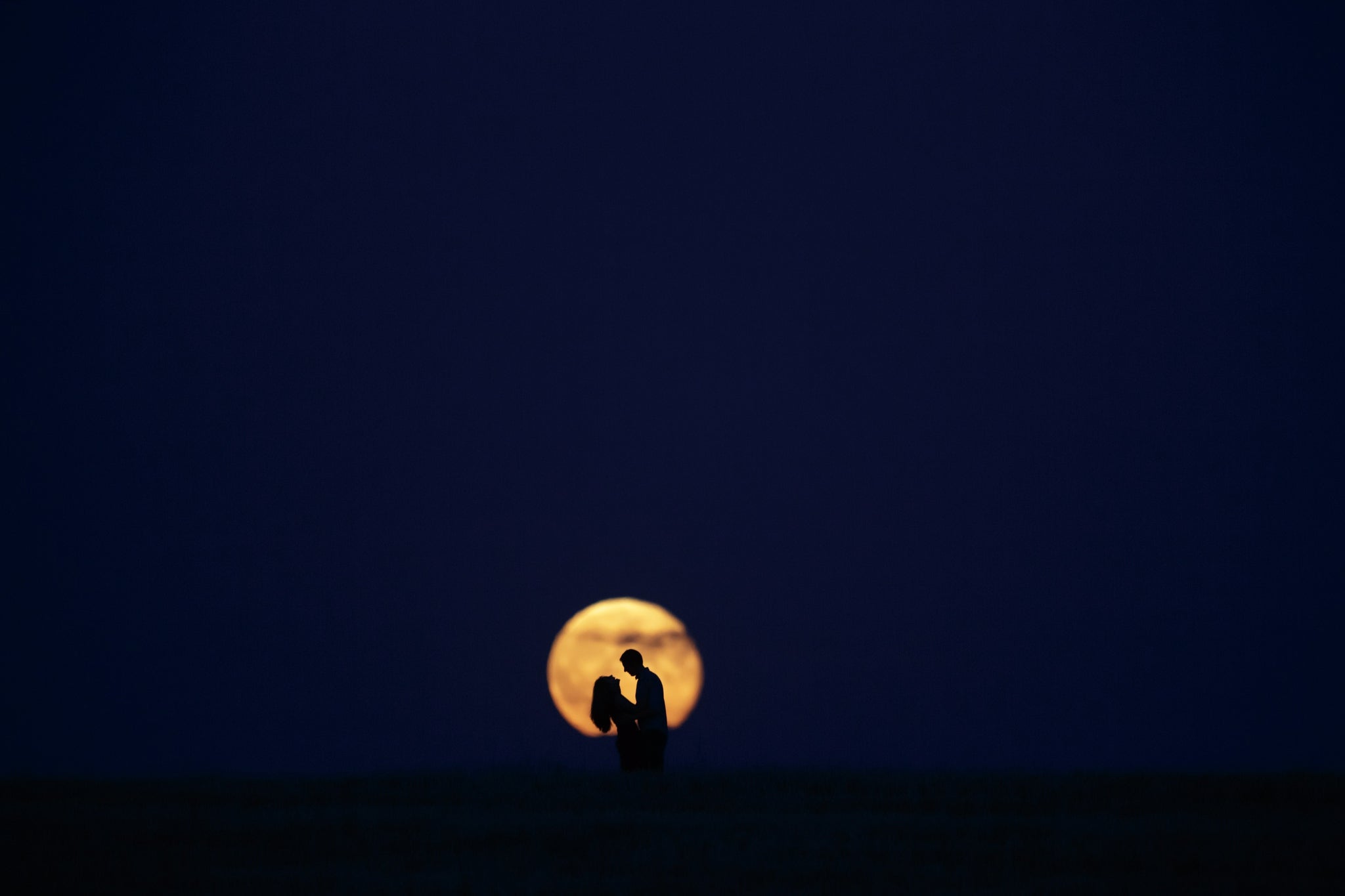Harvest Moon in pictures: 2014's last supermoon photographed around the world
The Harvest Supermoon was extra bright and large on the evenings of Monday and Tuesday

Your support helps us to tell the story
From reproductive rights to climate change to Big Tech, The Independent is on the ground when the story is developing. Whether it's investigating the financials of Elon Musk's pro-Trump PAC or producing our latest documentary, 'The A Word', which shines a light on the American women fighting for reproductive rights, we know how important it is to parse out the facts from the messaging.
At such a critical moment in US history, we need reporters on the ground. Your donation allows us to keep sending journalists to speak to both sides of the story.
The Independent is trusted by Americans across the entire political spectrum. And unlike many other quality news outlets, we choose not to lock Americans out of our reporting and analysis with paywalls. We believe quality journalism should be available to everyone, paid for by those who can afford it.
Your support makes all the difference.An intense moon lit up the skies this week, shining brightly over landmarks and becoming a stunning spectacle for those wanting to a catch a glimpse of it.
It was a Harvest Moon, which is the full moon closest to the autumnal equinox and this one coincided with its status as a supermoon.
A supermoon is a full or new moon which makes its closest approach to Earth during its elliptical orbit and appears up to 15 per cent larger than a normal one. Last night's was the third of 2014.
The annual Harvest Moon gets its name from the farmers who used to rely on its moonlight to help them work.
Around the time of the Harvest Moon, the moon only takes 30 minutes to rise and an illusion means that the low-hanging moon seems much larger than it is. It also looks like a "great pumpkin", Nasa says.
The three supermoons of 2014, however, occurred on 12 July, 10 August and 9 September.
Dr Tony Phillips from Nasa said earlier this year: “The scientific term for the [supermoon] phenomenon is ‘perigee moon’. Full moons vary in size because of the oval shape of the moon's orbit. The moon follows an elliptical path around Earth with one side (‘perigee’) about 50,000km closer than the other (‘apogee’). Full moons that occur on the perigee side of the moon's orbit seem extra big and bright.
“This coincidence happens three times in 2014. On 12 July and 9 September the moon becomes full on the same day as perigee. On 10 August it becomes full during the same hour as perigee—arguably making it an extra-super moon.”
Video courtesy of Newsflare.com
Join our commenting forum
Join thought-provoking conversations, follow other Independent readers and see their replies
Comments